- News
- Reviews
- Bikes
- Accessories
- Accessories - misc
- Computer mounts
- Bags
- Bar ends
- Bike bags & cases
- Bottle cages
- Bottles
- Cameras
- Car racks
- Child seats
- Computers
- Glasses
- GPS units
- Helmets
- Lights - front
- Lights - rear
- Lights - sets
- Locks
- Mirrors
- Mudguards
- Racks
- Pumps & CO2 inflators
- Puncture kits
- Reflectives
- Smart watches
- Stands and racks
- Trailers
- Clothing
- Components
- Bar tape & grips
- Bottom brackets
- Brake & gear cables
- Brake & STI levers
- Brake pads & spares
- Brakes
- Cassettes & freewheels
- Chains
- Chainsets & chainrings
- Derailleurs - front
- Derailleurs - rear
- Forks
- Gear levers & shifters
- Groupsets
- Handlebars & extensions
- Headsets
- Hubs
- Inner tubes
- Pedals
- Quick releases & skewers
- Saddles
- Seatposts
- Stems
- Wheels
- Tyres
- Health, fitness and nutrition
- Tools and workshop
- Miscellaneous
- Cross country mountain bikes
- Tubeless valves
- Buyers Guides
- Features
- Forum
- Recommends
- Podcast
TECH NEWS
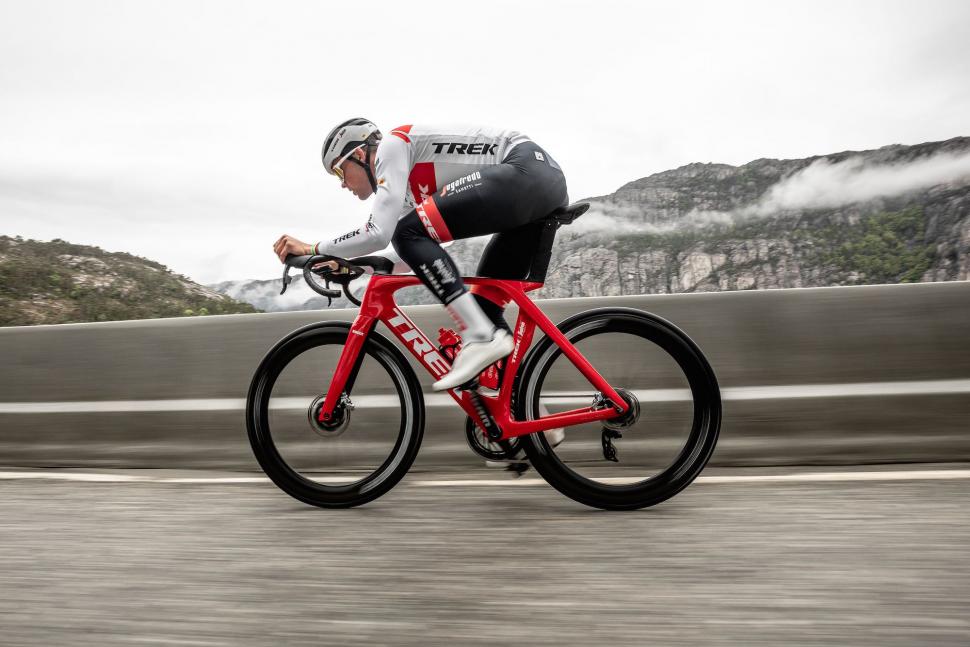 2023 Trek Madone action - 6.jpeg
2023 Trek Madone action - 6.jpegTrek releases radical Madone SLR, its “fastest road race bike ever”
Trek has launched a radical new version of its Madone SLR which it describes as its “fastest road race bike ever” thanks to IsoFlow technology – with a huge hole in the seat tube – that’s said to provide dramatic aerodynamic improvements, plus a significantly lighter overall weight. IsoSpeed, Trek’s existing system for adding compliance, is absent but IsoFlow is designed to flex over bumps to smooth the ride.
This is the bike that your intrepid road.cc reporters first spotted at the Dauphiné race in southern France earlier in the month. Let’s face it, we could hardly miss it.
Brand new Trek Madone breaks cover: exclusive look at radical aero road bike for 2023
There’s a shedload of detail coming up so let’s get you up to speed with a few bullet points:
- Trek says the new Madone SLR is 60 seconds per hour faster than the previous generation (see explanation below) thanks to new aero frame shaping, a redesigned bar/stem, and a more aero riding position.
- IsoFlow is designed to improve aerodynamics, flex over bumps to smooth the ride, and save weight over previous Madones.
- IsoFlow is said to offer a similar level of compliance to the previous adjustable IsoSpeed system in its stiffest setting.
- This is said to be the lightest ever disc brake Madone, about 300g lighter than the previous model.
- Trek claims a frame weight of just under 1,000g and a fork weight of just over 400g.
- The Madone SLR is compatible with electronic drivetrains only.
Okay, let’s go through the various important aspects of the design in turn.
IsoFlow
The most noticeable aero feature of the seventh-generation Trek Madone SLR – and the most talked about since we got pictures at the start of the month – is the IsoFlow seat tube. The tube splits in two, each section going on to join one of the seatstays. Then the seat tube resumes out of the top tube to house the aero seatpost. The pictures make things a whole lot clearer.
The obvious question is: what the hell is going on there?
Trek’s senior design engineer Alex Bedinghaus says, “When we met with our World Tour pros, one of the biggest things that they were passionate about was: how can we make the bike lighter? They were questioning the effectiveness of IsoSpeed so we started to dig into how to make a simpler, lighter-weight system that still gives them everything they would want for aerodynamics and for sprinting stiffness.
“We did a lot of aerodynamic testing in the wind tunnel, in computational fluid dynamics (CFD), and computer modelling to figure out in which areas of the frame we could save the most drag and weight.
“We looked at the front of the frame but this seat tube section is also really important because there's a lot of turbulent flow – a lot of chaos – going down there for the air.
“We tried a lot of crazy things and weighed the benefits in an iterative and long process. We finally came up with this unique IsoFlow design where we have this hole through the seat tube.
“We can accelerate the air around the head tube and into this low-pressure zone behind the rider, making the rider and bike more aerodynamic and faster.
“It also has this cantilevered seat tube and really optimises weight, aerodynamics and compliance. It’s a unique solution that gets us to a lighter weight system than what we had before, and beats our aerodynamic goals by quite a bit.”
Trek’s director of road bikes Jordan Roessingh adds, “IsoFlow is a way to direct some high energy flow into a low energy region of the bike, and that's really what we're trying to do in aerodynamics: get rid of low energy and high drag areas of the bike.
“When you're riding a bike, there's a really low energy area behind you. As you pedal, you create these counter-rotating vortices, and that creates a lot of drag. That [IsoFlow] hole right in front of that low energy area introduces a jet of fast-moving air that reduces the drag for the whole system.”
That’s a short explanation of how IsoFlow is designed to work. To put a figure on it, Trek says that compared with the previous generation Madone SLR, the new version will save 60 seconds per hour at 45km/h (28mph). Of course, anything travelling at 45km/h will cover 45km in an hour; what Trek means is that you'll achieve 45km more efficiently. If you ride at the same power, you'll hit 45km 60 seconds sooner.
“A ride that would take you an hour normally would take you 59 minutes on the new bike,” says Trek aerodynamicist John Davis. “If I bring that down to 35km/h (21.7mph) we still get a 59-second gain, and if I bring it down to 25km/h (15.5mph) that's a 58-second improvement from the new bike.
“Going from the old bike to the new bike and keeping the same bar size, we’ll see about a 19-watt improvement in drag at 45km/h (28mph).”
In other words, you’ll save be able to achieve that speed while pedalling at a lower power.
“That 19-watt number, that's the whole system: the rider and the bike. About 9.3 watts comes from the bike and then 9.7 watts from the position change on the new bike.”
We’ll come back to that position change in the bar/stem section.
Other aero features
Putting IsoFlow to one side, Trek says that it has been busy developing new Kammtail profiles for the new Madone SLR.
“We have a new generation of Kammtail shapes across the bike,” says Jordan Roessingh. “We have optimisation software, and we have a supercomputer where we can run thousands of iterations of the shapes, and so we look at aerodynamics or unsteady aerodynamics to better mimic the real world.
“We can also analyse these shapes for structural efficiency and weight. Then from those thousands of shapes, we choose the most optimal for our use case, in this case, a really aerodynamic bike that we still want to reduce the weight on. And then we can plug those in and check how they do in CFD.”
Alex Bedinghaus says, “The cockpit [see below] is all-new, revised for ergonomics as well as aerodynamics, and then the head tube is a little bit smoother, more structurally efficient, while still being really aerodynamic.
“The down tube is optimised for the airflow over bottles as well as without bottles – you get the aerodynamic benefit with and without them – and the top tube is optimised in cross-section for aerodynamics. The thickness [in the middle section] of the top tube is for adding flex to the IsoFlow. It allows the seatpost member to flex a little bit more by having a thin cross-section in front of the IsoFlow.
“The seat tube cross-section is optimised for aerodynamics and weight, and then as we transition down, there’s a shelf just below the seat tube water bottle, right above the bottom bracket, and that improves the flow of the air as it goes over the crank and the back of the bike.
“With this bike, we added this removable front derailleur hanger, which is super cool because the drag of the front derailleur is substantial. We can give the 1x [single chainring] rider a cleaner aesthetic.”
The bar/stem
Trek has given the new Madone SLR a new one-piece bar/stem that features flared drops – so the tops and hoods are narrower than the drops.
Find out about handlebar reach here
“If you keep the same bar size [the width on this bar is measured at the drops], your shifters will move in 3cm – so you're faster when you're on the hoods because you're narrower,” says Jordan Roessingh, although Trek insists that the main motivation for the change is mainly ergonomic.
“Because the bar is wider in the drops, you have more control and more power in that position. There's also a new drop shape with a shorter reach [80mm] and a different curvature. It provides easier access and it’s a position that you can be more comfortable in, so you can spend more time in your drops than previously.
“It allows you to tailor your position to what’s going on in your ride. If you want to go fast you can get on the hoods, but if you need control or power, you're sprinting, going through a corner, those drops are an awesome position.
“We tested that in the wind tunnel just to see what would happen, and [it saved] an extra 9.7 watts on top of the 9.3 watts that the bike was already contributing, so it was a bonus.
“If you don't want to get your hands any narrower, you still get the 9.3 watts that the bike is giving you just by itself.”
Aside from the width, the handlebar/stem profiles are also shaped for aero efficiency.
“The tops of the bar include the new shapes that we came up with in our optimisation, and we did a lot of work on the stem and the spacer stack,” says Jordan Roessingh.
“They influence the aerodynamics of the rider because they're upstream of the legs.
“If you look at the flow visualisation, there's a lot of interaction of the flow coming off that, and the vortices that are created on the rider, so we did a lot of really small tweaking in our CFD and in the tunnel to optimise the shape.”
If you’d rather not use the Madone-specific handlebar/stem, you can fit any standard 31.8mm stem or bar/stem.
Weight and comfort
Okay, so Trek says that IsoFlow improves aero efficiency but IsoSpeed was included on previous Madones to add compliance, so its absence presumably affects the way the new bike feels.
Alex Bedinghaus says, “One of the biggest goals with the seventh generation Madone was to reduce weight as much as possible, so we looked all over the bike [and said]: how can we take the things that we’ve already done, the things we know work well, and simplify them?
“We took out the [IsoSpeed] pivot, we took out that unique flexing component, and we just integrated that into the way the frame is designed. The frame is [now] designed to be the flexing component. It’s stiff, it’s aero, it's lightweight, but it’s compliant in the one way we want it to be, which is the vertical compliance at the saddle.
“As we developed this awesome new IsoFlow technology, we were able to take out some of that added complexity of IsoSpeed and crank up the stiffness just a little bit. With it, we do take out a little bit of the comfort, but we add back a performance benefit to give the perfect formula of weight, aerodynamics, and compliance.”
Trek says that the Madone SLR’s cantilever design – the fact that the top section of the seat tube is attached to the rest of the frame only at one end – means that non-adjustable IsoFlow gives as much compliance as adjustable IsoSpeed in its stiffest setting. Trek also says that there will be no effect on durability as a result of this design feature.
Trek claims that the new Madone SLR is almost 300g lighter than previously across the whole bike (not just the frameset), making it the lightest disc brake Madone it has ever made. It says that about half the weight savings come from the frame and the other half from the bar/stem combo.
“Most of the gains that we see in road bike system improvements are 10g, 20g, 30g… to go to 300g is huge,” says Alex Bedinghaus. “With the previous design, we focused on aerodynamics as a whole system of the bike, so if you look at the head tube, there are larger cutouts in the previous design. We could shroud the fork or shroud the cockpit by adding a little bit of frame material that stretched above the head tube.
“But with this design, we wanted to keep things clean so that we could be efficient [in terms of] weight and structural rigidity, so we took out some of those cutouts of the head tube.
“The previous generation cockpit left some room for improvement [regarding] aerodynamics and ergonomics. The weight improvements of the aerodynamic cockpit are huge, and then we were able to get quite a bit of improvement over the previous frame with IsoFlow and make a really clean, elegant solution to all those weight, stiffness, and aerodynamic parameters.
“We also use a different layup philosophy in this OCLV 800 [the carbon that Trek uses on its top-level frames] and were able to take some more weight out that way, and the new seatpost clamp also takes off quite a bit of weight.”
Trek claims a frame weight of just under 1,000g for the frame and just over 400g for the fork. Complete Madone SLR bikes start at a claimed 7.1kg. That weight refers to the Madone SLR 9 – built up with Shimano Dura-Ace Di2 – in a 54cm size.
Claimed weights for other complete bikes are in the specs and prices section (below).
The Emonda SLR remains the lightest road bike platform in Trek’s range.
Geometry and seatpost
Although Trek talks about the new Madone offering a more aero riding position than previously, that’s down to the dimensions of the handlebar/stem; the bike retains the company’s H1.5 race-orientated geometry and all key frame measurements are the same as before.
Click on the image of the table in the gallery for a (slightly) clearer view.
The only real differences in terms of fit are the saddle rail heights that are possible on the various sizes as a result of the redesigned seatpost system.
Bikes sized 47-54cm will get a short seat post, and bikes sized 56-62cm get a tall seat post. All stock seatposts are 0mm offset (the saddle sits directly above the centre of the post with no layback).
Specs and prices
Here are details of the 2023 Madone SLR range:
Trek Madone SLR 6
Groupset Shimano 105 R7170 Di2
Wheels Bontrager Aeolus Pro 51
Claimed weight 7.8kg
Price £6,850
Trek Madone SLR 6 eTap
Groupset SRAM Rival eTap AXS
Wheels Bontrager Aeolus Pro 51
Claimed weight 8.0kg
Price £7,450
Trek Madone SLR 7
Groupset Shimano Ultegra R8170 Di2
Wheels Bontrager Aeolus Pro 51
Claimed weight 7.5kg
Price £9,150
Trek Madone SLR 7 eTap
Groupset SRAM Force eTap AXS
Wheels Bontrager Aeolus Pro 51
Claimed weight 7.8kg
Price £9,600
Trek Madone SLR 9
Groupset Dura-Ace R9270 Di2
Wheels Bontrager Aeolus RSL 51
Claimed weight 7.1kg
Price £12,700
Trek Madone SLR 9 eTap
Groupset SRAM Red eTap AXS
Wheels Bontrager Aeolus RSL 51
Claimed weight 7.3kg
Price £13,800
Trek Madone SLR Disc frameset £5,000
All of the Sram-equipped bikes include power meters.
The wheels are all tubeless-compatible, but the bikes will be fitted with standard inner tubes and non-tubeless-compatible tyres and rim strips.
Trek says that Project One customisation is coming at a later date.
Final details
The Madone SLR is compatible with electronic drivetrains only; it can’t accommodate mechanical shift systems.
Trek says it’ll take tyres up to 28mm wide. That allows for 6mm of clearance around the tyre, so you might be able to fit something slightly wider if you wanted to.
The Madone SLR uses a T47 threaded bottom bracket, which is a standard Trek has been moving towards over the past few years.
The brakes are flat mount and the bike will take rotors up to 160mm front and rear. Like most other similar road bikes, the Madone takes 100x12mm (front) and 142x12mm (rear) thru-axles.
Mat has been in cycling media since 1996, on titles including BikeRadar, Total Bike, Total Mountain Bike, What Mountain Bike and Mountain Biking UK, and he has been editor of 220 Triathlon and Cycling Plus. Mat has been road.cc technical editor for over a decade, testing bikes, fettling the latest kit, and trying out the most up-to-the-minute clothing. He has won his category in Ironman UK 70.3 and finished on the podium in both marathons he has run. Mat is a Cambridge graduate who did a post-grad in magazine journalism, and he is a winner of the Cycling Media Award for Specialist Online Writer. Now over 50, he's riding road and gravel bikes most days for fun and fitness rather than training for competitions.
Latest Comments
- David9694 58 min 30 sec ago
Police, firefighters and paramedics at Staffordshire smash as 4x4 left in ditch...
- David9694 1 hour 1 min ago
Jolly Farmers pub in Forncett Saint Mary closed after crash...
- dodgy 2 hours 33 min ago
Hard to reconcile the asking price of this, with this https://road.cc/content/tech-news/quintana-roo-unveils-new-all-speed-aer...
- Secret_squirrel 2 hours 36 min ago
I've used Armourtex in north london if you're willing to Powdercoat. Great job. https://www.facebook.com/armourtex
- bluezurich 3 hours 6 min ago
Cycling.Today has you covered for free. Tiz does as well but the moderation over there is a bit facist. Well, a queen mod rules it so it's a...
- chrisonabike 3 hours 40 min ago
Well, on one of my uprights I have a mirror mounted but it is really too small / fitting is not secure enough. I find I just don't use it. On...
- Hirsute 5 hours 21 min ago
This highways roadwork protection vehicle should have been wearing hi viz https://www.bbc.co.uk/news/articles/clyer0ny3x7o
- matthewn5 7 hours 10 min ago
The ugliness is the dealbreaker for me.
- Simon E 7 hours 28 min ago
I'd put in a nomination for the Cateye Viz range....
- Generally speaking 7 hours 29 min ago
It's true I cycle everyday but I've never contributed anything to Maidenhead, admittedly it's 113 miles away and a bit out of my way just to nip to...
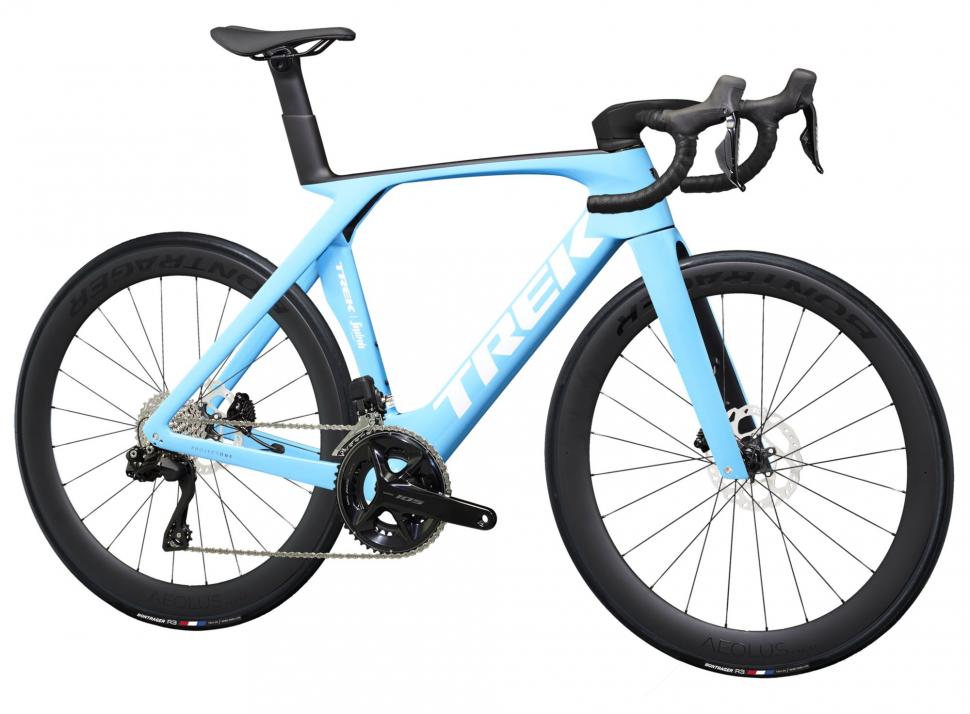
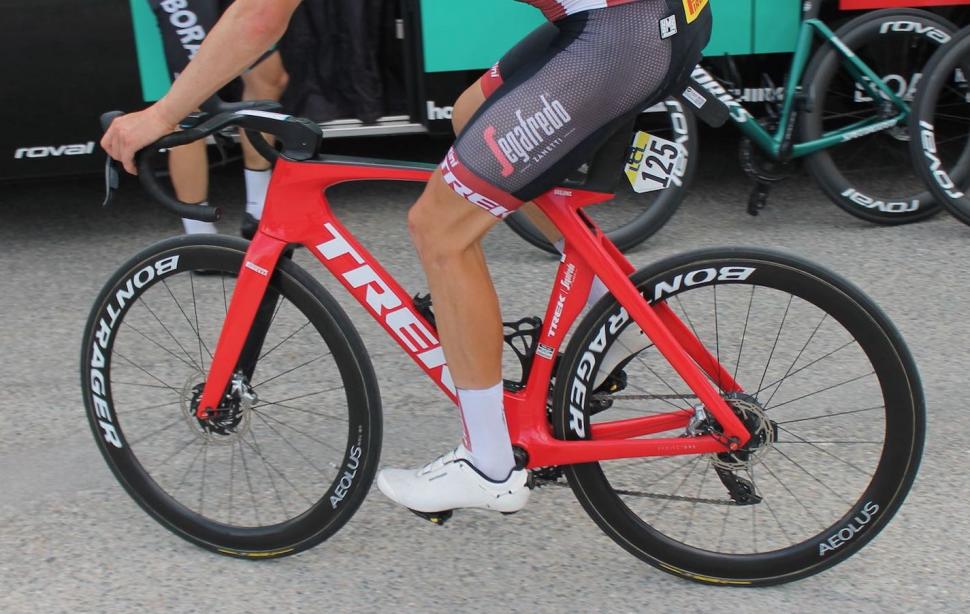
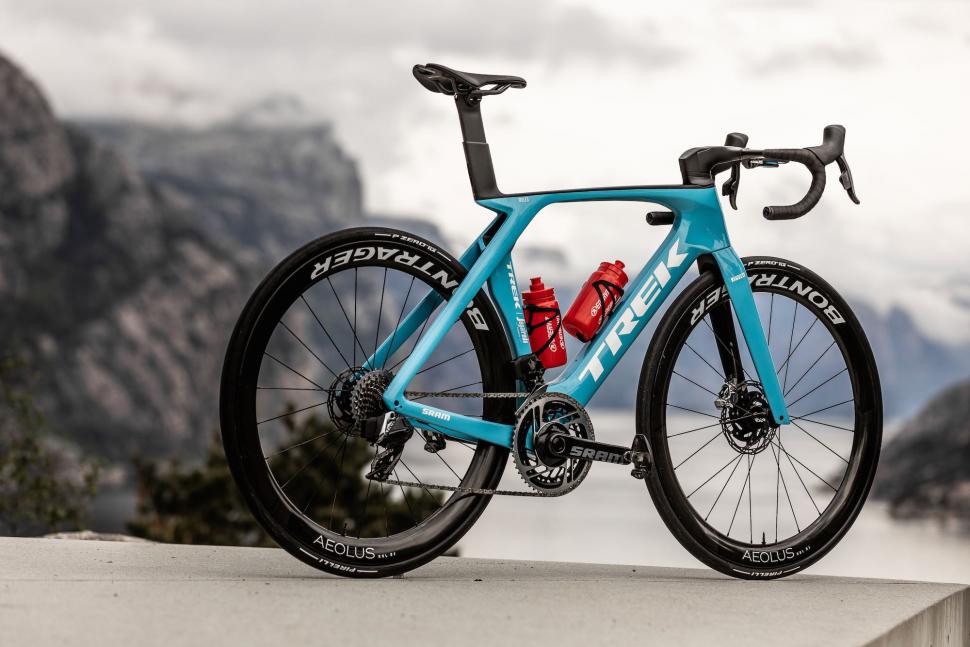
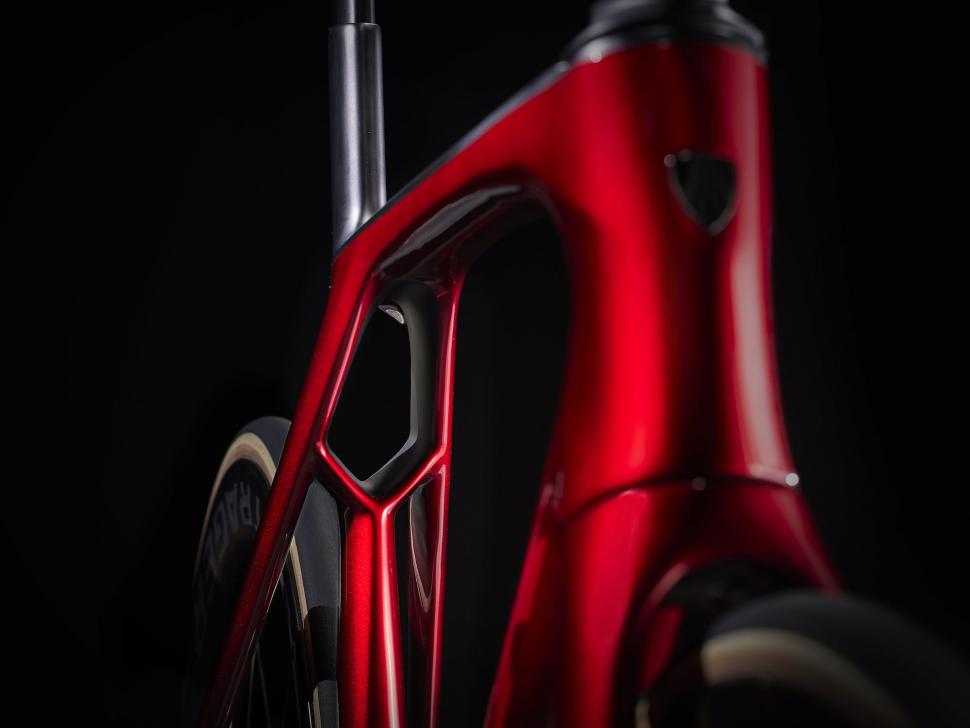
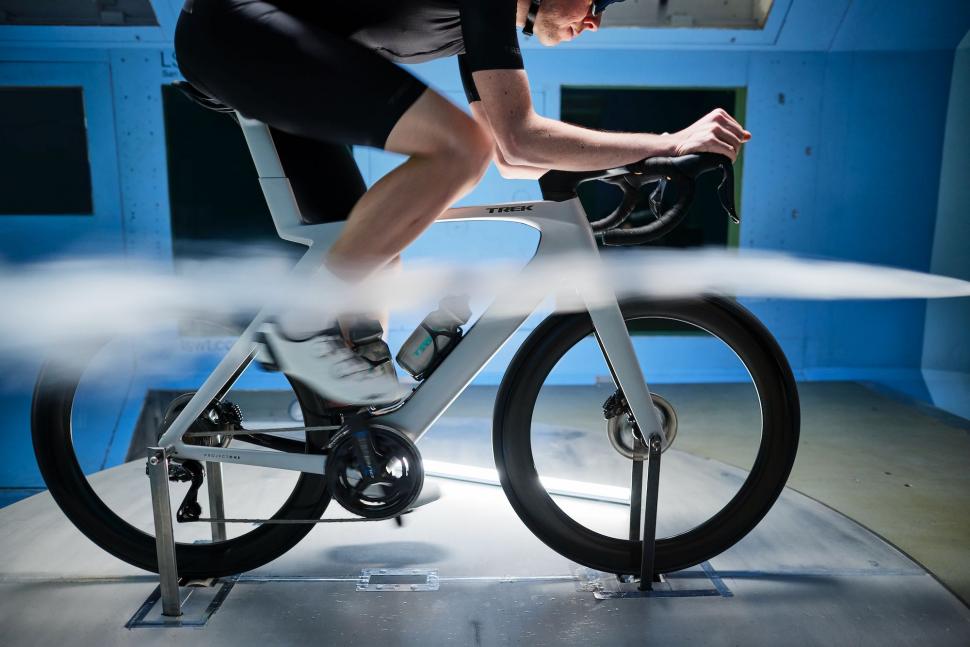
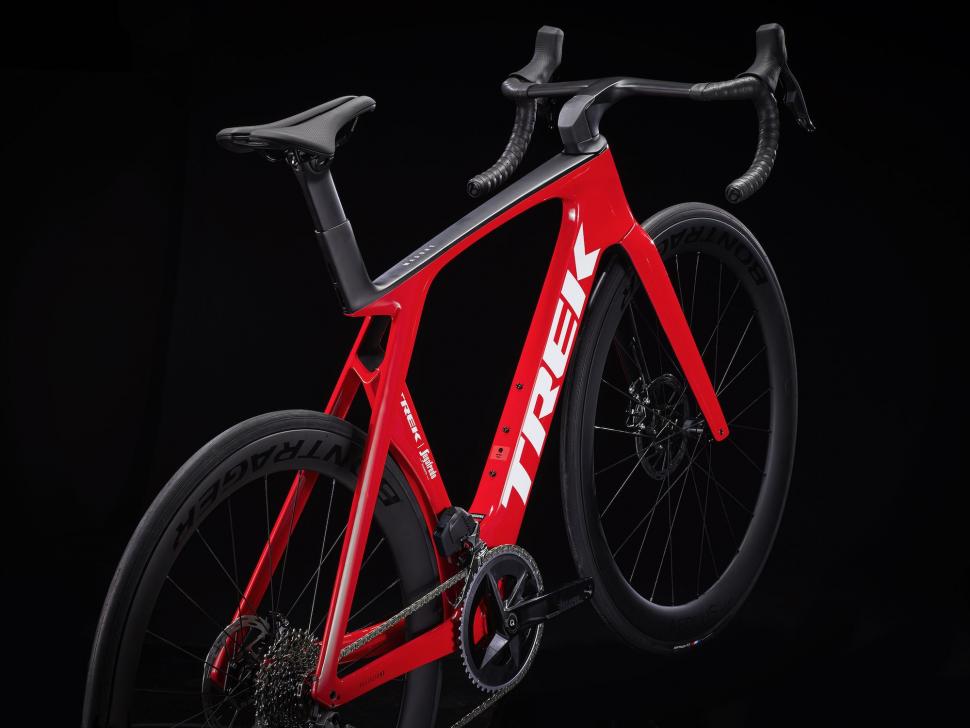
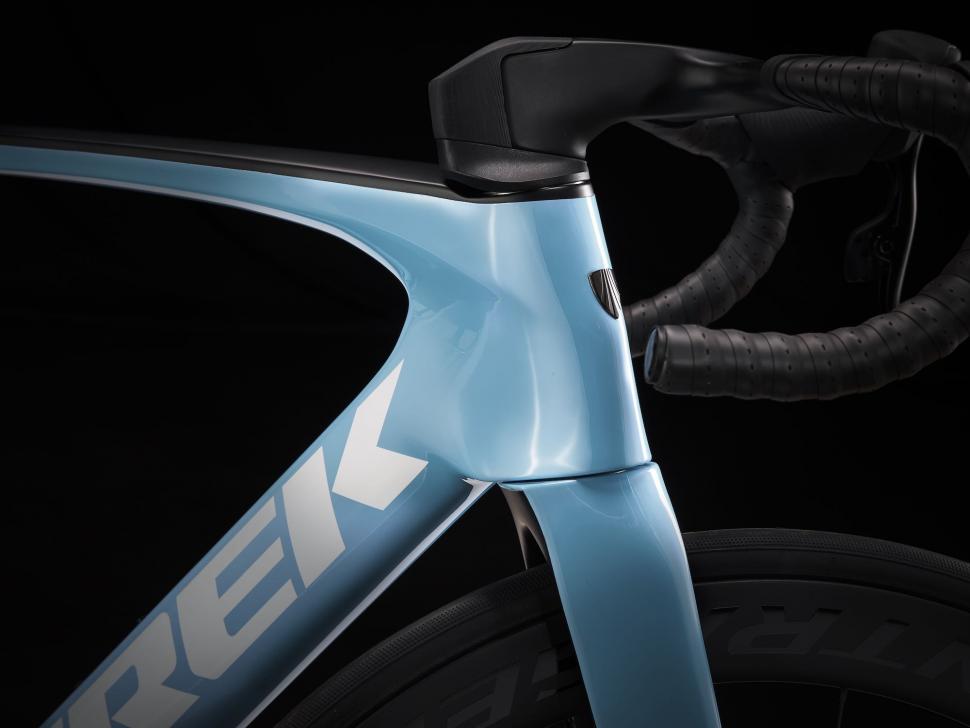
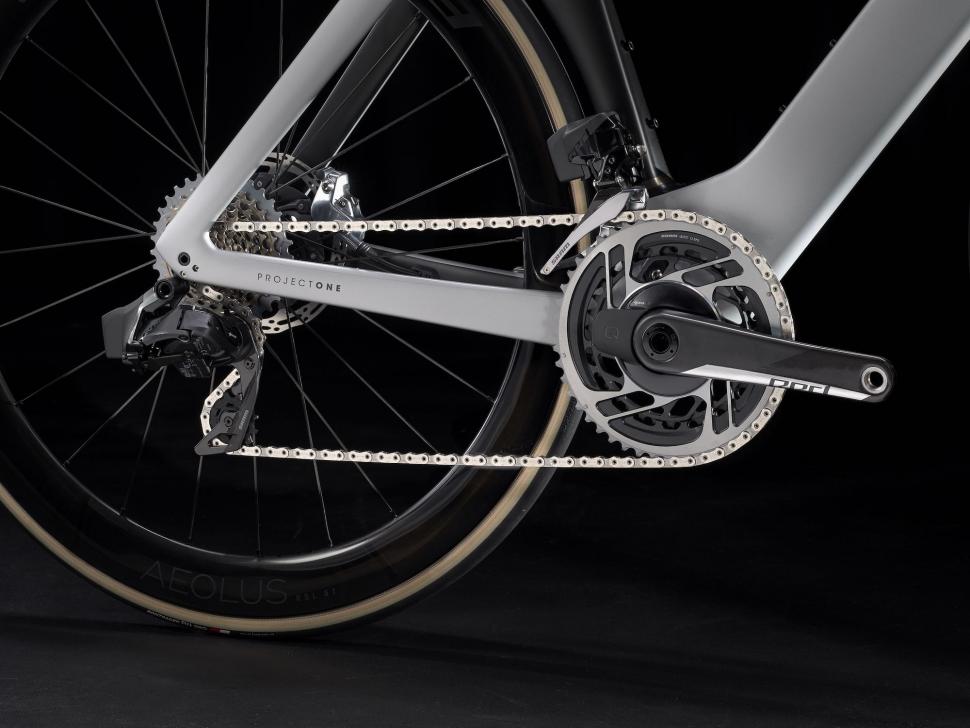

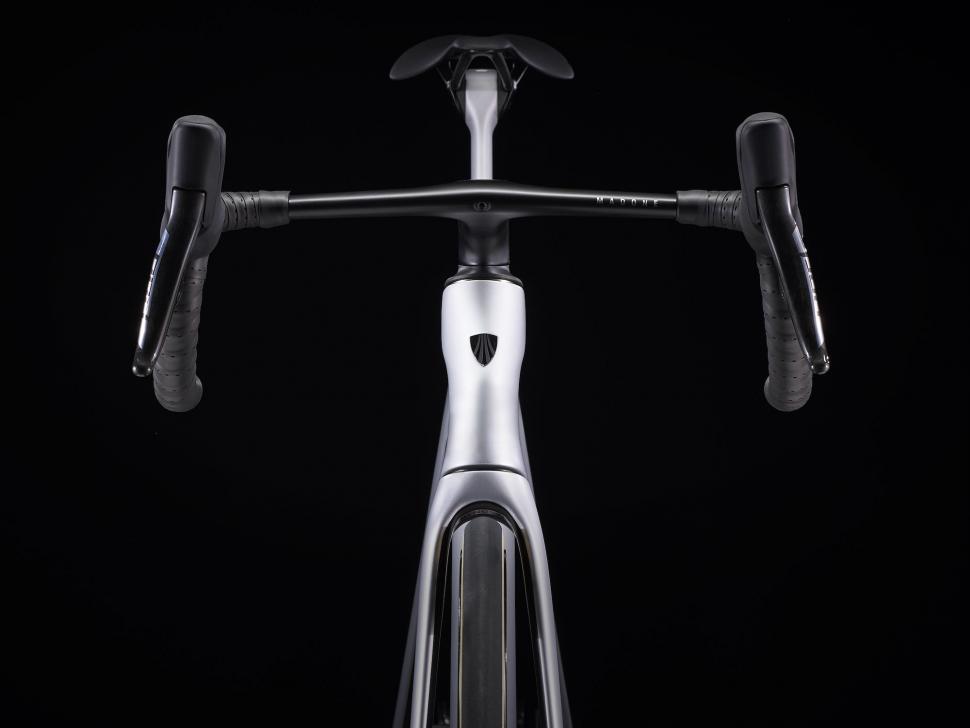
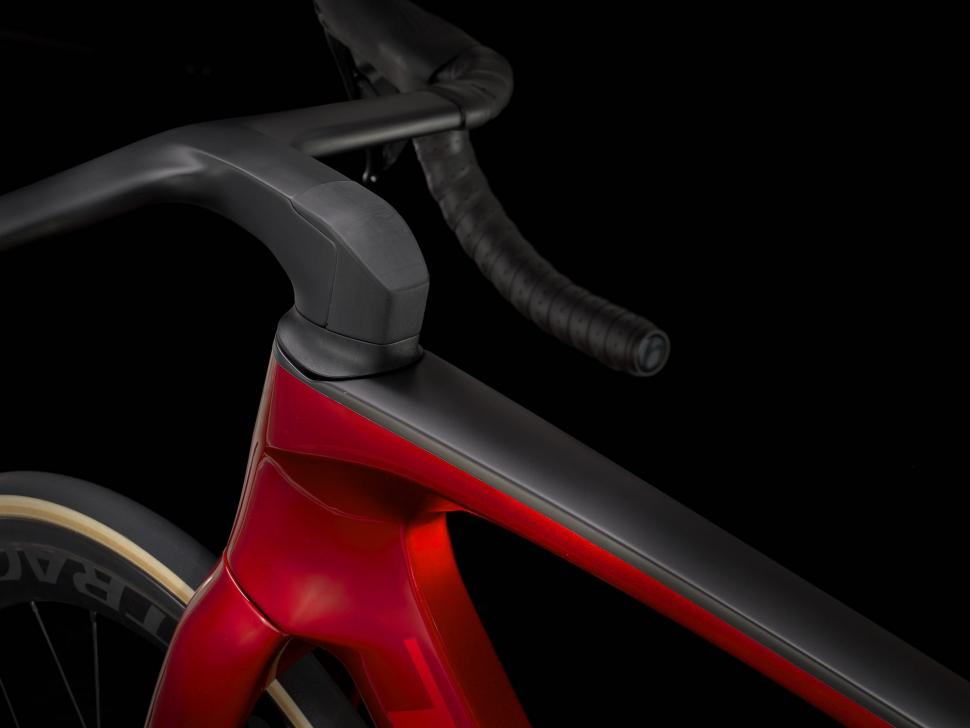
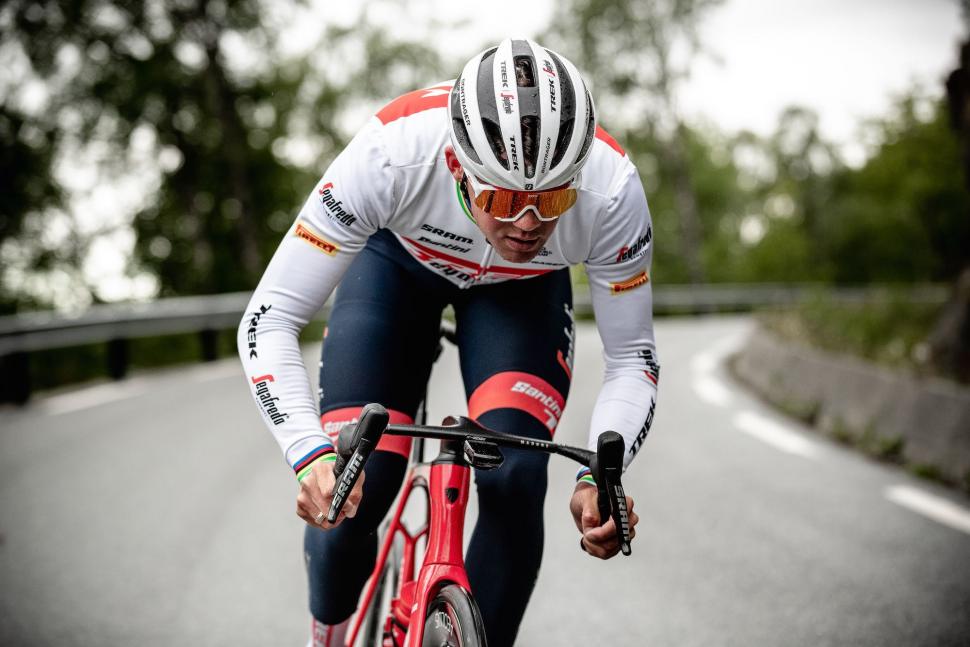
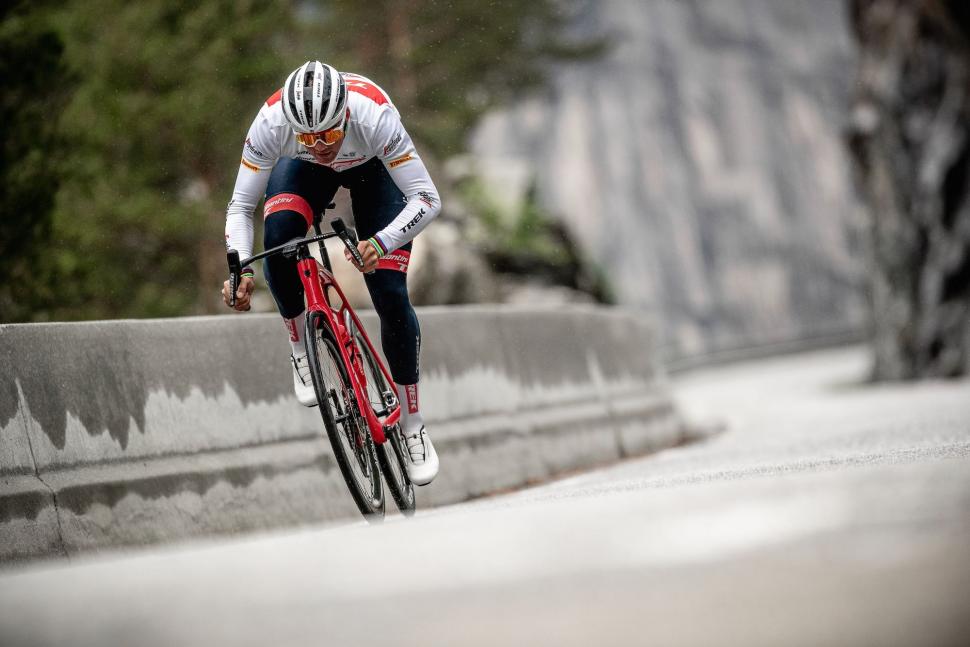
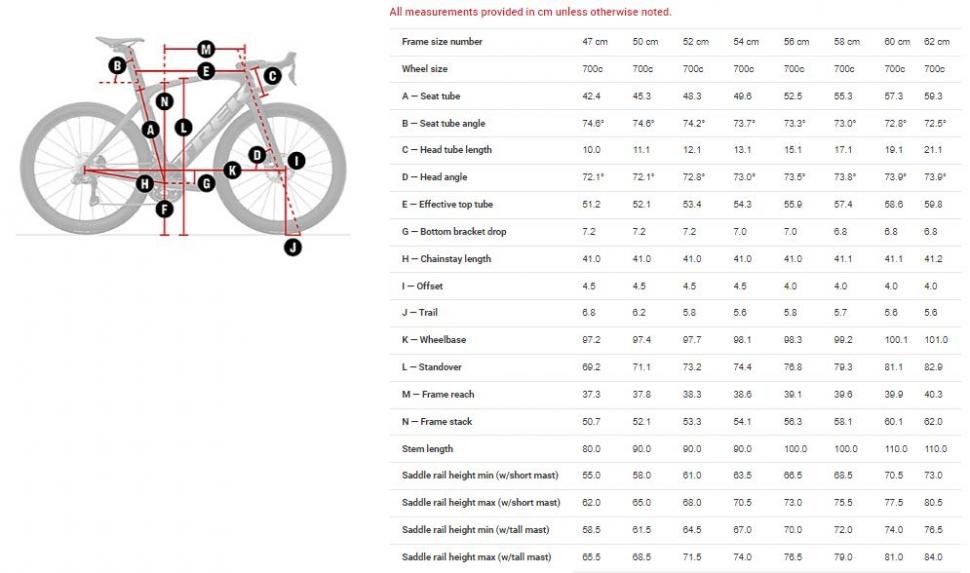
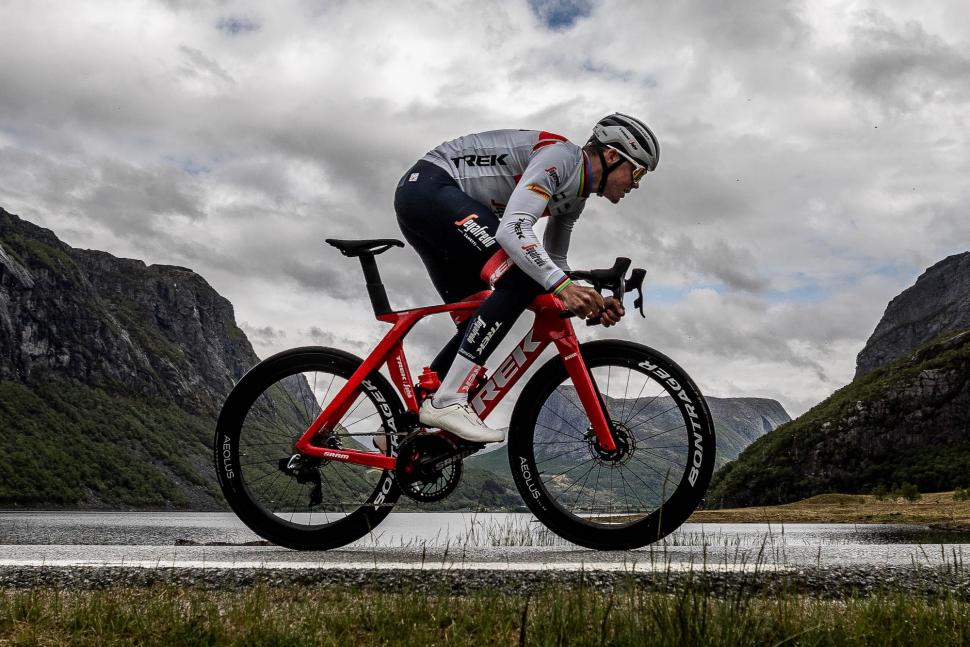
Add new comment
22 comments
I'm old enough to remember when 13 grand got you a bike that weighed less than 6kg, now it doesn't even get you near the legal minimum
Trek have never been the cheapest though have they?
Fastest bike ever? And I thought that it was the legs which propelled the bike.
At least when it inevitably starts cracking around the seat cluster you won't have to be seen riding such a monstrosity while making the warranty claim
The problem with all these cutting edge bicycles is that every year they get replaced with an updated version which is so significantly improved in every marketable way to the extent that 5 year old models must become unmoveable, lumpen monstrosities with the handling characteristics and appeal of 3 day old fish by comparison.
Think how bad toothpaste must have been 50-60 years back...
And dog food.
I'll admit to nibbling on the odd Bonio dog treat when I were kid. Seem to recall they were no worse than the cat crunchy I accidentally ate a couple of weeks back when I thought I'd picked up the bag of peanuts.
I'm rather partial to these salami sticks for a nibble. Daughter asks why I'm eating cat treats!
They are great for tubeless punctures.
Trek really does try too hard to be different. Fugly has never been a design philosophy that would get me to part with my money.
I reckon the new Domane will be a better ride on real world roads.
I don't now what's happened between the original story on this bike and now, but it's grown on me and I actually quite like it. I'd sill be nervous about the longevity of the seat... er, ledge with the weight of a rider who's not a five-foot, skinny pro over rough, bumpy roads - so I doubt this'll be my next bike.
These prices are crazy. £2300 extra to go from 105 Di2 to Ultegra Di2 with the rest of the spec staying the same?!
Ribble are charging £700 for the same upgrade.
I think best bet would be to get the SLR6 and then upgrade the shifters later. Couple of hundred grams extra but you'd save yourself a fortune
These price points do seem questionable to put it politely. And would anyone serious pay £900 more to stick 200grams on your bike and less reliable performance in eTap over Dura Ace?
I'm sure there are other spec differences, but on the face of it... hmmm.
and that's ignoring the near £14k asking price for the top of the range model... come on, when will people start questioning this stuff.
Personally, my next bike will be a quality open mould frame with some fancy dance paint on it. Mechanical campag grouspet (assuming Campag doesn't do a Shimano in the coming weeks), and probably some hunt wheels. 99% of the performance for a third of the price.
I'm guessing the upgrade will also include the fancy bar/stem combo? Or better carbon etc etc
I quite like the bike...but too much £££ for me
Nope, identical spec bar the groupset. You could get the 105 Di2 SLR6 and upgrade the whole drivetrain to Ultegra Di2 for less than the SLR7
Plus (or minus, depending on which way you look at it) you could eBay the 105 groupset for probably £1400, meaning the whole upgrade would cost you around £700. £2300 for an approximately £700 upgrade in groupset with no other differences is simply an outrage.
Yeah but Ribble will never be able to deliver your bike, whilst having had your cash for months/years.
2 bikes released today that both claim to be faster, lighter and comfier than the model they replace.
The Scott I'd seriously consider if I were in the market for a fast sunday best bike (and my decrepit spine could allow me to ride it) but the Trek? No way. Apart from the fact that design is fugly I'd have serious concerns it could take my weight in the long term and the resale value of these will be through the floor.
I know we don't buy a bike thinking of selling it but it must be a consideration in this design.
4680 quid to save half a kilogram - Ultegra Di2 vs SRAM AXS Red and some slightly better wheels. This has got to be the piss take pricing of the year so far.
I'm sure it's going to get a lot of hate because it doesn't look like something good 'ol Eddy rode but chapeau to Trek for shaking off the shackles and buidling a 21st Century bike. Let's not forget it is intended to win World Tour races, is a pro machine and I doubt anyone ever stopped to consider the needs of a commuter or gravel rider whilst designing it.
Exactly, and it's grown on me a bit. Certainly better looking than the new Scott Foil. Trek pricing is up the spout though!